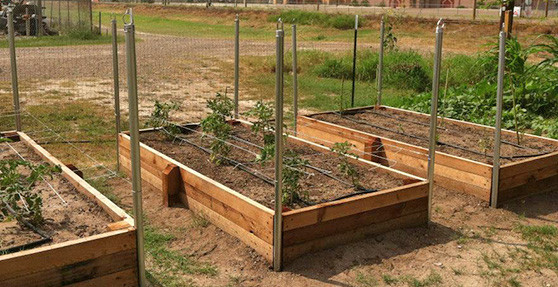
By Dr. Mario Villarino, Texas AgriLife Extension Agent for Agriculture & Natural Resources, [email protected]
Don’t forget to give your landscape a steady amount of water, through irrigation or by hand, if there is not adequate rain. As soon as the November weather appears to be settled, it is time to select and plant such annuals as pansies, violas and ornamental cabbages and kale. Plan now for your spring flowering season with a mixture of annuals and perennials.
Don’t get in a hurry to prune woody plants. Late December through February is usually the best time to prune them.
Place orders for seeds this month so you will have them available when you are ready to plant. By ordering early, you will be more certain of getting the varieties you want. In addition to ordering seeds that you are already familiar with, try a few new kinds each year to broaden your garden contents.
November through February is a good time to plant trees and shrubs. In the Panhandle, planting is often delayed until February or early March. Bring in late-blooming plants such as decorative kalanchoes or Christmas cactus so they may finish flowering in the warmth of the house. Reduce the fertilization of indoor plants from late October to mid-March. An exception would be plants in an atrium or a well lighted window.
Drain gasoline from power tools and run the engine until fuel in the carburetor is used up. Drain and store garden hoses and watering equipment in a readily accessible location. The lawn and plants may need water during a prolonged dry spell.
Continue to set out cool-season bedding plants, such as pansies, violas, stock, snapdragons, and dianthus. Prepare beds and individual holes for rose planting in January and February. Use composted manure, pine bark, and similar materials mixed with existing soil.
Use good pruning practices when selecting Christmas greenery from landscape plants. Don’t destroy the natural form and beauty of the plant. Prolong the life of holiday-season gift plants by providing proper care. Check to see if the pot wrap has plugged up the bottom drainage. Don’t overwater. Keep out of drafts from heating vents and opening doorways. Fertilizer is seldom needed the first few months.

Take advantage of good weather to prepare garden beds for spring planting. Work in any needed organic matter, and have beds ready to plant when needed. Don’t forget tulip and hyacinth bulbs in the refrigerator. They can be planted any time in December if they have received 60 or more days of chilling.
Want to start cuttings of your favorite Christmas cactus? As soon as it has finished blooming, select a cutting with 4 or 5 joints, break or cut it off, and insert the basal end into a pot of moderately moist soil. Place it on a windowsill or other brightly lit area. The cuttings should be rooted within 3 to 4 weeks.
Don’t spare the pruning shears when transplanting bare-rooted woody plants. Cut the tops back at least one-third to one-half, to compensate for the roots lost when digging the plant. Take advantage of bad weather and holiday time to study seed and nursery catalogs as well as good gardening books. Berrying plants, such as holly and yaupon, may be pruned now while they can be enjoyed as cut material inside the house.
For more information on this or any other agricultural topic please email me at [email protected] or call the Hopkins County Extension Office at 903-885-3443.





